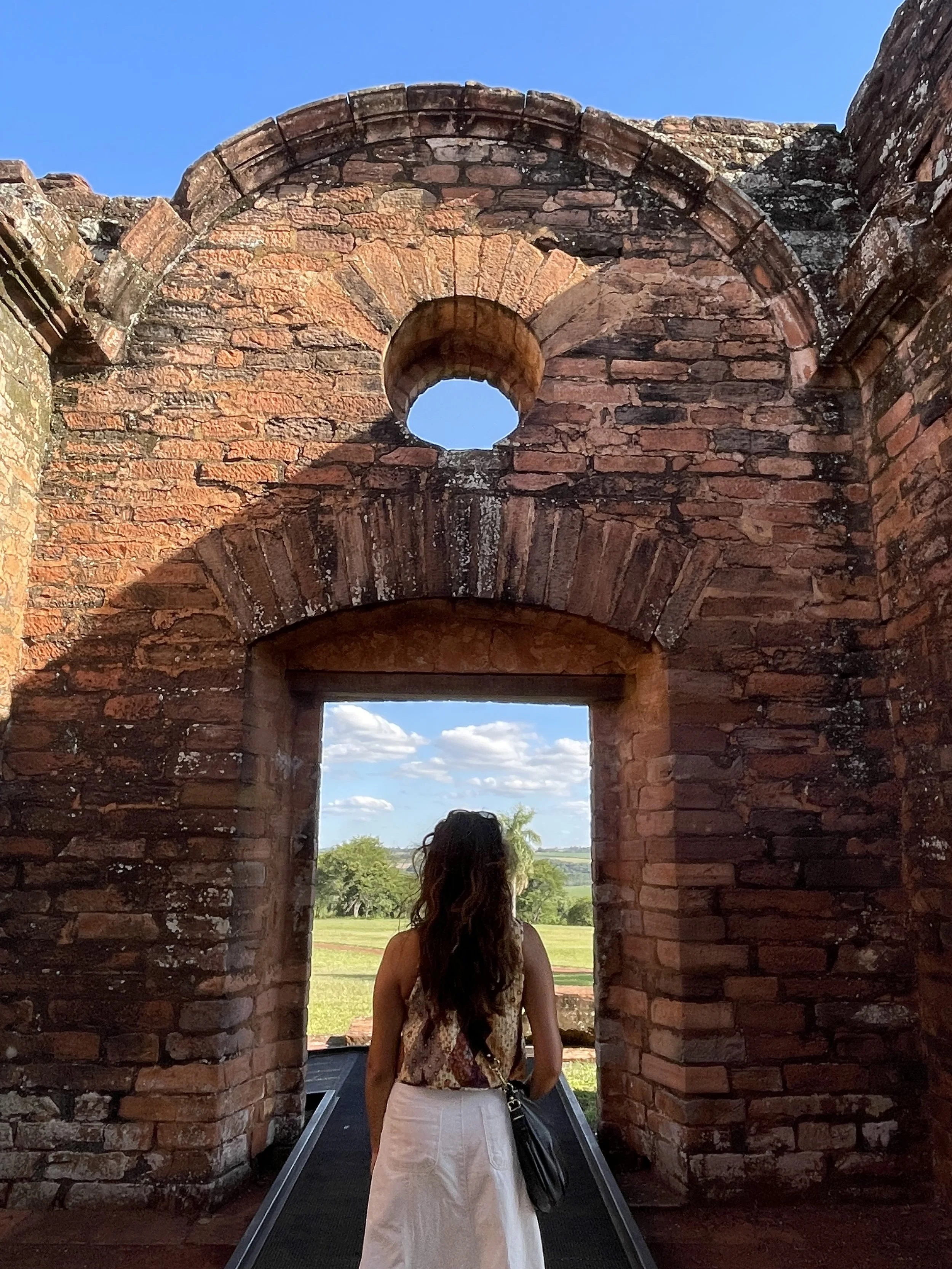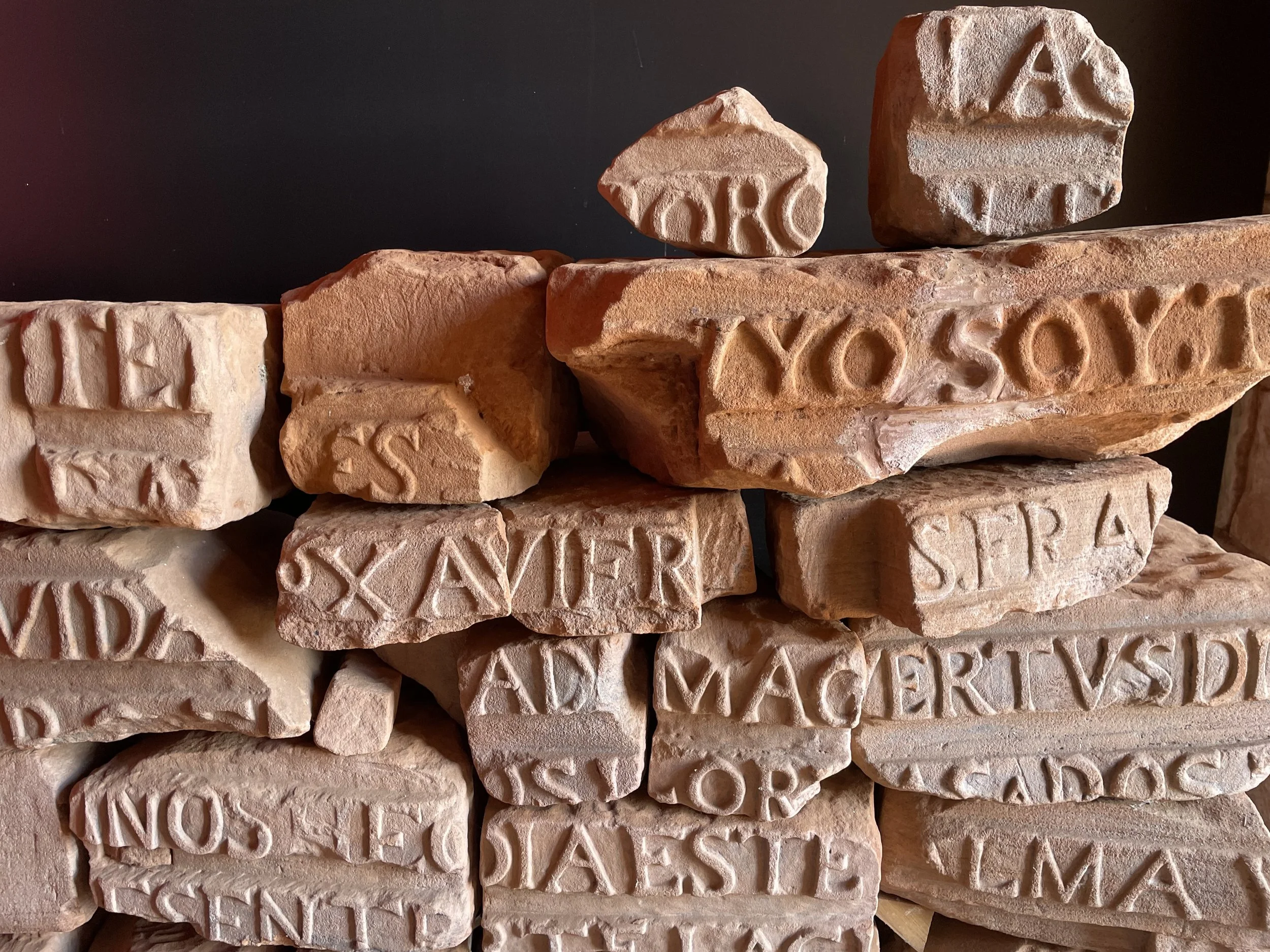Visiting the Jesuit Missions Trail and the The Triple Frontier - how NOT to do it.
Please be warned that this is not a travel guide. In fact, this post is a ‘how not to travel guide’. Do you ever read a headline about some tourist stuck in this-or-that situation and think “how the hell did they end up there?” I had hoped that I would not join this dubious group, and yet there I was, two borders, two car rentals, two taxis, and a whole lot of stress later.
How did we get here?
Before starting my big solo travels, I was fortunate enough to have some time travelling with my parents. Never one to play it small, we planned a trip to Foz de Iguaçu (Iguazu Falls), one of the seven wonders of the natural world. These waterfalls also happen to be on the border of three countries - Paraguay, Argentina, and Brazil. In fact, this is a large part of their marketing, as the meeting point of the ‘Frontera Tríplice’, or in English, the Triple Frontier.
So I (foolishly) thought, since we were in the neighbourhood, that we might pop over to say hi to our neighbours, Argentina and Paraguay, and visit some historic ruins of the Jesuit missions while we were there. With that in mind we booked 3 nights in Encarnacion, Paraguay, and 4 in Foz de Iguaçu, Brazil, with only a meagre 250km and 2 international borders between them. Simple, right?
Where it went wrong - Day 1
Our first snag was when we discovered our Brazilian rental car was not insured to cross international borders, and it was in fact, nigh-on impossible to find a rental car in Brazil that could cross borders. Oops! This was a less than ideal discovery to make on our stopover, the journey already underway.
The second snag was outside of our control - our airplane was unable to land due to adverse weather, was re-routed and hour away to re-fuel, and then finally did land, close to four hours behind schedule. The combination of these factors grounded us in Foz de Iguaçu for the night. So that was a write-off for Day 1 (although we did manage to fit in a delicious dinner).
Still going wrong - Day 2
On the second day, we had to leave our rental car and take a taxi into Argentina to rent a different car (since as aforementioned, ours couldn’t cross the border). However we were left with another problem - whereas it was difficult to find a car that could traverse both Brazil and Argentina, it was impossible to find a car that was insured to go to Paraguay. Where our hotel was booked. At this point, the only way out was through, so off we went.
With our car finally in hand, we were able to visit the nearby Wanda Mines and begin the journey through Misiones state. However, we still had one more border to cross before we would be able to sleep - it sat on the bridge between Posadas (Argentina) and Encarnacion (Paraguay). By the time we arrived in Posadas, the easy methods of transport were no longer running, and the hour-long struggle to find decent parking for our car was making us desperate. So there went the second expensive taxi, which crossed the border with us into Paraguay and dropped us off at our hotel just before midnight (after some stresses over not having local money).
So there you have it! Almost two full days of travel woes later we settled in Encarnación, minds heavy with extra lessons and pockets lighter after all the taxis. I’ve left out some of the lows, including threats of mutiny, insufficient funds, and many a tired conversation/discussion/scrap.
Finally worth it - Day 3
On our third day, we visited the ruins of Trinidad, in Paraguay. These historic ruins are the country’s only UNESCO World Heritage site, and form part of a wider network which make up the remains of Jesuit Missions of the Guarani. These 30 ‘city-states’ reached a population of close to 150,000 inhabitants the mid 18th century and stretched from the coast of modern day Brazil to Paraguay, where we now found ourselves. The ruins were empty - we were the only tourists at Trinidad, and were fortunate enough to have a personal guide, who told us all about the history of Trinidad and the wider network of Missions. These ruins convey a story on the intersection between religion and colonialism, and religion’s role in both legitimising and/or resisting colonialism. A definite worthwhile stop for anyone interested in this period of South American history.
Riding High - Day 4
On our fourth day, we made our way back to home soil, returning via the San Ignacio Mission, Argentina’s largest Jesuit mission. We appreciated the contrast of visiting both Missions - Trinidad was better preserved (it had avoided looting due to its more remote location), whereas San Ignacio has a better touristic infrastructure and easier transport links. Both were worthwhile stops as part of the wider network of Missions. In fact, we later met a historian who told us more about the wider network of the Missions, including that the end goal was to build up the Andean Corridor, an ancient indigenous trading route. That was stymied when the Jesuits were expelled from South America, but that’s another story.
So there you have it - all’s well that ends well, I suppose! A lot of learning - some history, some theology, some culture, and some life lessons thrown in there. What would I share for any upcoming travellers?
Lessons Learned (warning: these may be painfully obvious)
Travel Days: Try to play it safe on travel day - this doesn’t mean sit at the hotel and do nothing, but rather that you keep it local - plan activities that either don’t need to be pre-booked, are free/cheap, and local. In fact on that thought….
Consecutive Travel: Avoid booking consecutive travel plans on the same day (i.e. flight and long car journey.) If it cannot be avoided, ensure you have enough of a cushion to absorb the impact of crises (such as a plane being unable to land).
Car Rentals: If you are renting a car when travelling, consider whether your travel plans will have implications on the rental. Read the fine print, and ask questions before making any financial commitments.
International Borders: Plan to arrive early at any border crossings, ideally within business hours - it will make things a lot easier if/when things get a bit confusing.
Money Exchange: If you’re not arriving with the local currency, do exchange some money into local currency, even if it means you have to pay silly airport rates. It is even more silly to not have any local currency, and potentially not be able to get taxis/food in a pinch.
Cash: Carry USD or Euros in CASH when you travel - helpful if you can’t exchange cash, as it is likely to be accepted widely (esp USD in South/Central America.


